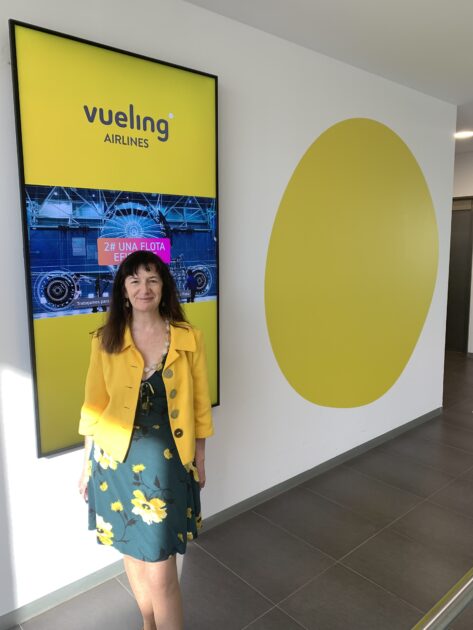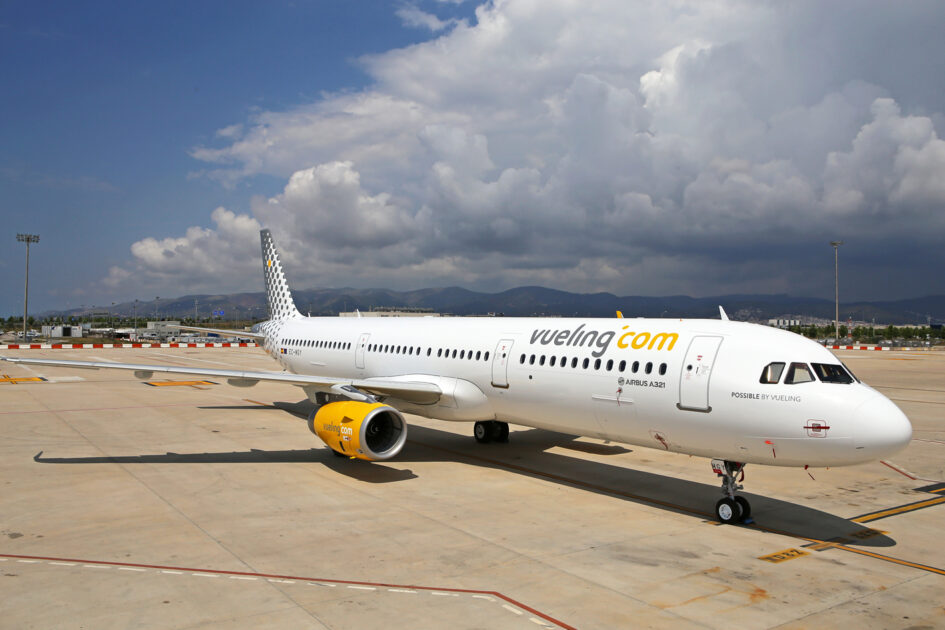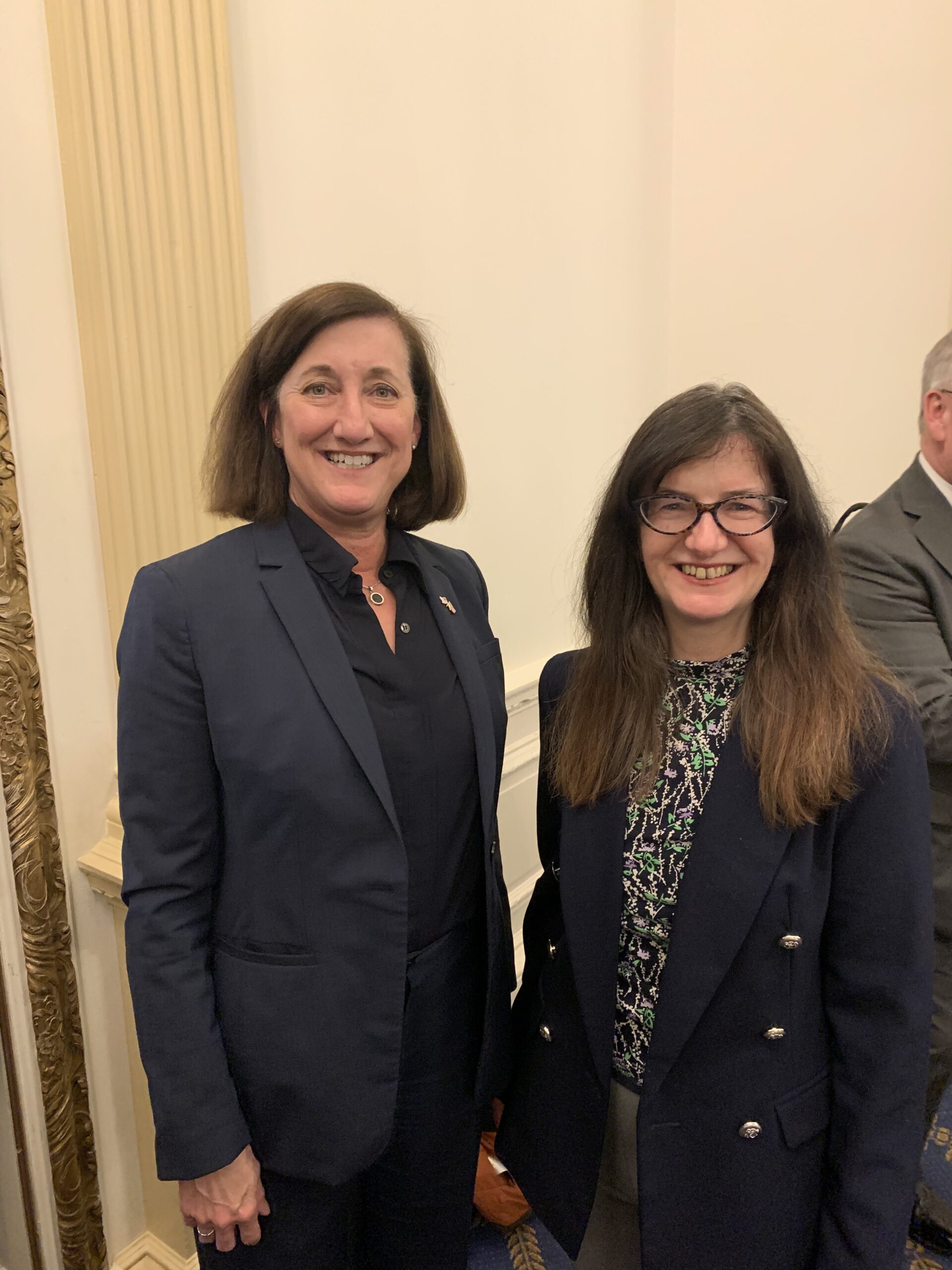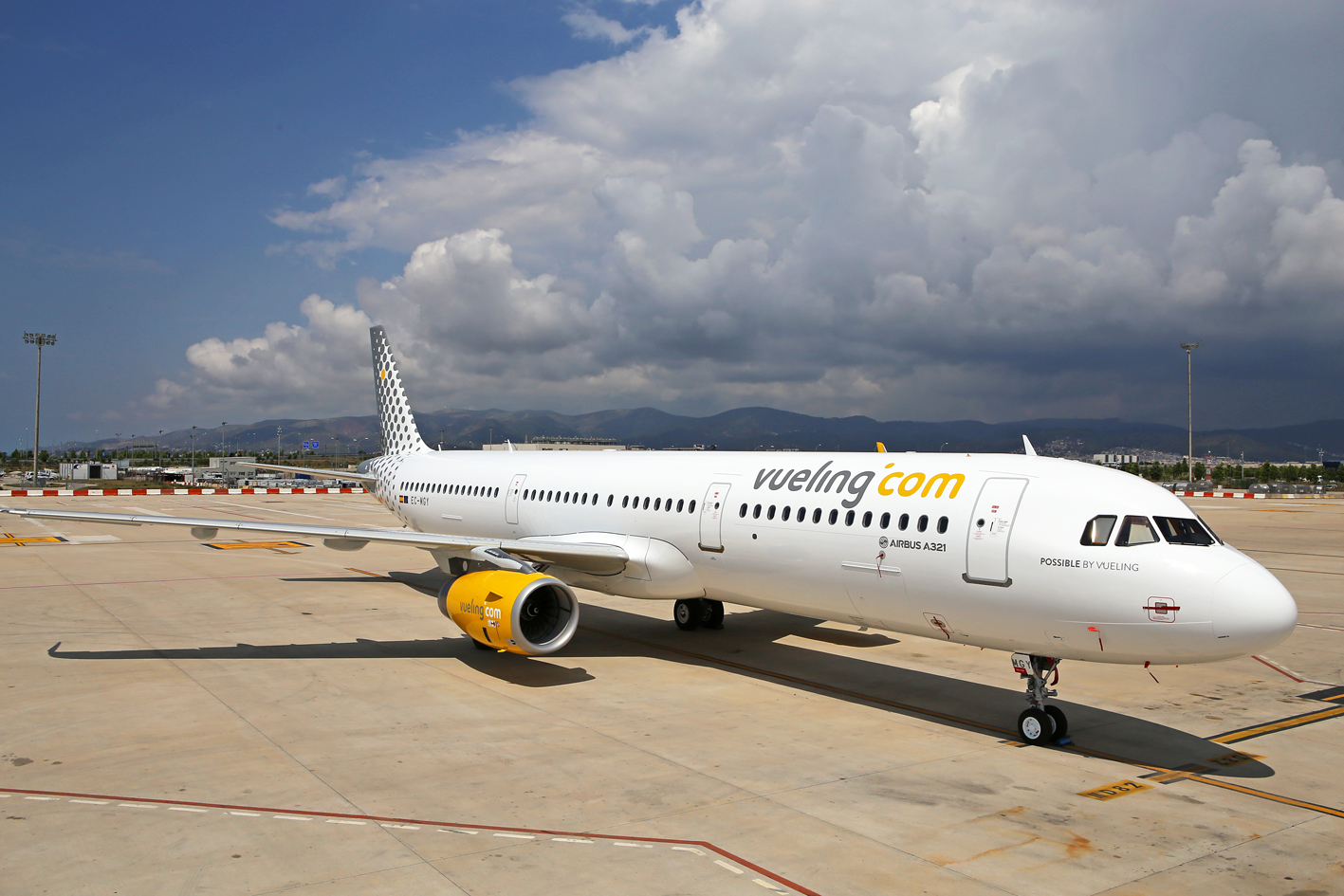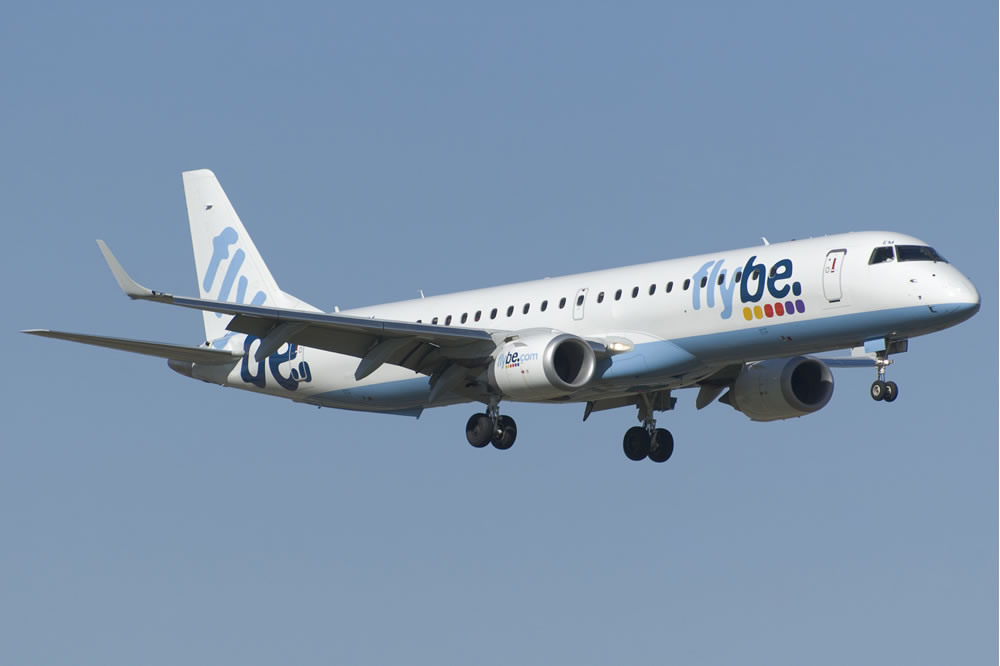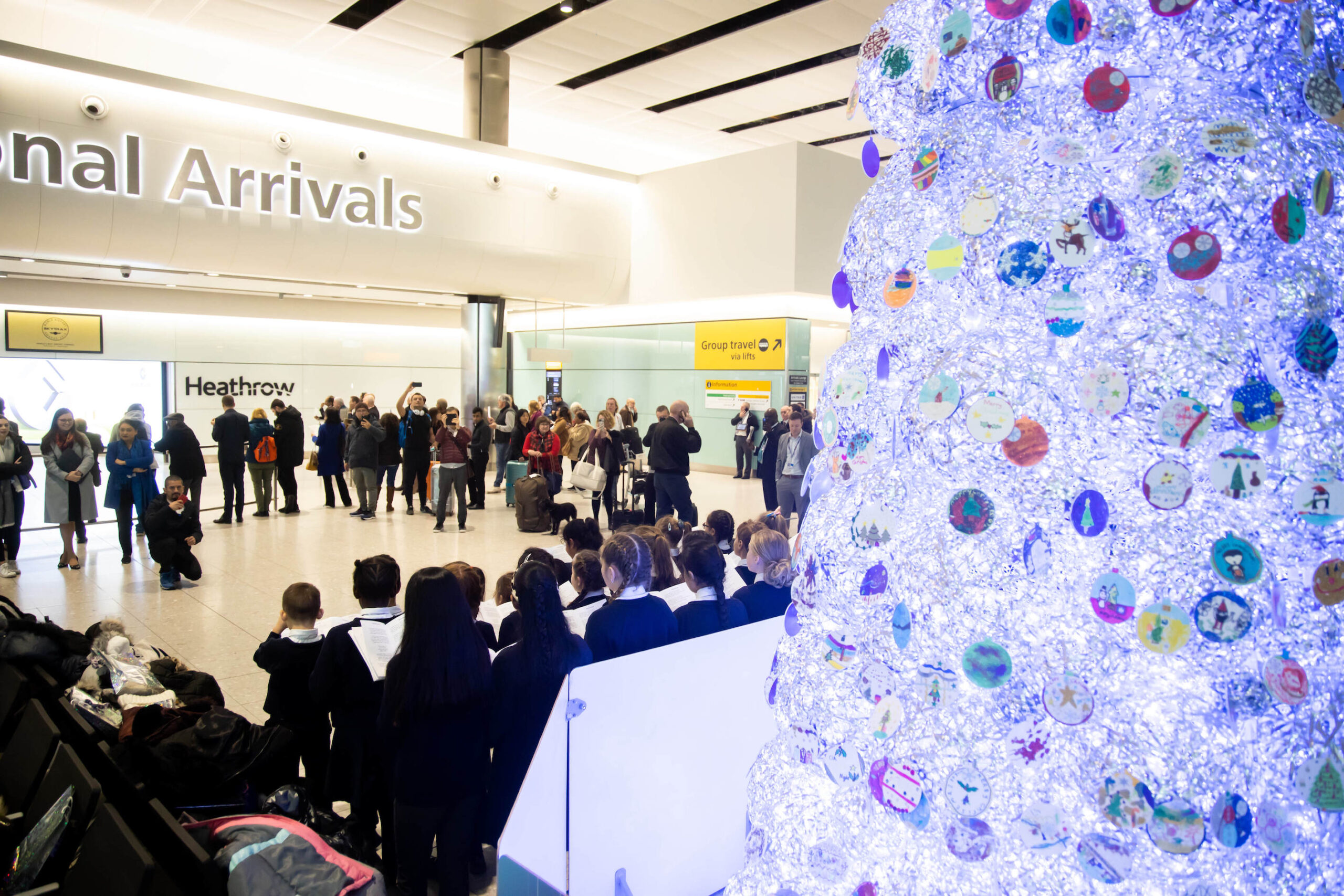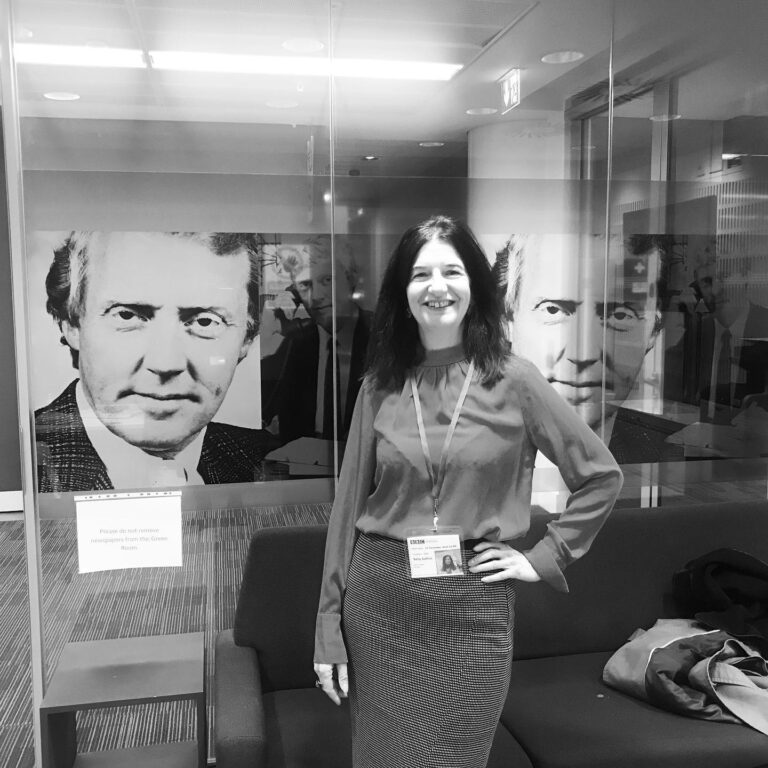Time flies. Is it really 20 years since Vueling launched?
Headquartered in the Catalonian capital of Barcelona, the Spanish owned airline has grown, systematically and organically, not by making noisy announcements and launches, but by careful measures without much fanfare, addressing the growing Gen Zr market. Astonishingly it has reached its 20thbirthday this year, with cause to celebrate.
Nestled within the IAG, a grouping of dominant network carriers characterised by British Airways and Iberia, Vueling, a niche low cost short and medium haul airline has quietly built up its customer base. But with 2024 its 20th birthday, Vueling is now a major commercial asset to the IAG, with major profits announced in the last quarter.
It earned over EUR1bn in Q3 2023, up 5.9percent year on year. The airline carried 28M passengers by third quarter in 2023, a 3.9percent increase over pre-covid levels, and saw strong demand across its entire network.
Transformation initiatives have driven up load factors to 91.8percent (up 4.5percent compared to pre-covid) and maintained strong ancillary revenue performance. On Time Performance improved by 8percent compared to 2019.
I was invited to its headquarters in Barcelona. The sunny face of the airline is evident with its bold yellow facade and colourful interiors. There is a palpable positivity and upbeat vibe among the 350 employees housed inside.

A further 150 work from its Zaragoza base. Barcelona and Zaragoza are termed Agile Development Centers (ADC). Vueling looks for an agile mindset from its recruits. The ADC in Barcelona focusses on technology and an agile mindset. ADC Zaragoza brings in engineering graduates, and the support of the regional government.
With 210 routes, Vueling is expanding in Europe with the UK and Spain its top two markets. Founded in 2004 it is now the largest airline in Spanish domestics and the clear leader at Barcelona Airport. There are 11 bases in Spain and five across the UK, France, Italy and the Netherlands.

In the UK, Gatwick is its largest base and gateway with 160 weekly departures mainly to Spain but also to Rome Florence and Paris. This includes 54 weekly flights from Gatwick to Barcelona. Vueling is still mainly a point to point airline, but leveraging major bases such as Barcelona and Gatwick, points to a more hybrid hub direction.
Vueling is also notably dedicated to its airport partners. Cardiff Airport for example remains a key destination for Vueling, despite its proximity to the more popular Bristol Airport. But Cardiff’s catchment is considered to be better, despite the seasonal nature of its traffic . ‘We see the airport as our partner, and it takes a few years maturity to see routes develop,’ says director long term network Jordi Pla.
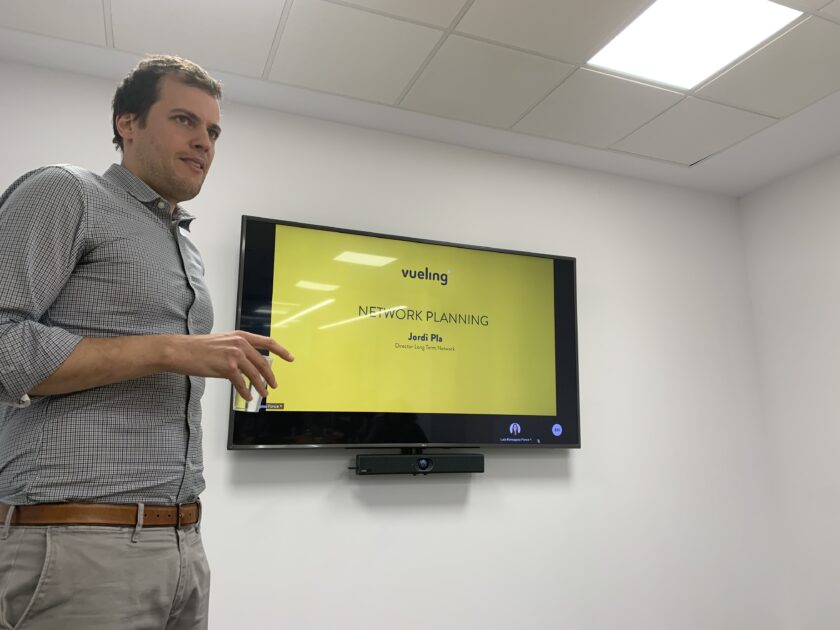
So what sets Vueling apart from not only its fellow member airlines at IAG but also the Low Cost Carrier market?
At the heart of its growth is Vueling Transform, a digital transformation programme. This includes Vueling Tech with five pillars: Agile Culture, Agile Development Centres, Zero Obsolescence, Cybersecurity, and Cost & Flexibility.
Tech innovation is a 100percent virtualised environment, with a private cloud, replication of the network and a host of other innovations, including code release quality control with SonarQube automation.

Vueling is also strongly invested in data science and management with a data driven strategy. It uses cloud architecture and big data to drive its strategy, addressing customer satisfaction vs punctuality, sales forecast and willingness to buy, or determining the best aircraft for a flight. 140 staff are dedicated to data analytics alone.
Digital transformation is split into four time zones: from now through to 12 years from now and beyond. Four research groups address: Robotics & IOT, AI, Quantum Computing and Virtual and Augmented Reality. AI will be a major focus this year. VR is expected to impact in 2-5 years, Robotics in 6-12 years and beyond that the metaverse.
On robotics, Vueling is working with Microsoft, retaining an open mind as to how this will develop. ‘We have no idea yet of the role but we just let it work internally,’ says Alvarez. ‘We need to develop solutions now for when there’s a need and opportunity.’ Quantum computing is used to create algorithms to predict customers’ decisions. VR and AI is being launched this year as a tool to train crews.
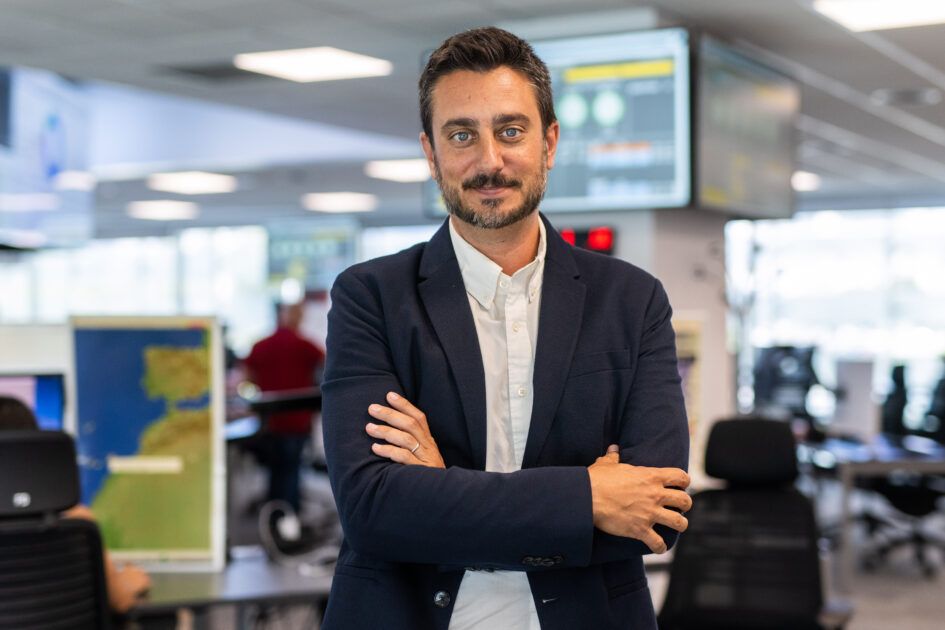
Overall the company has 4,200 employees. The difference compared to many other low cost carriers, is its replenishment from local universities accounting for a third of new hires. Graduates undergo two months’ training and if they pass, then they are hired. ‘They have a fantastic performance and are very motivated, so we will continue with this initiative,’ says IT director Javier Alvarez.
This is a clean sheet airline – no burdensome legacy fleets and attitudes to encumber its forward thinking plan. Zero obsolescence is the driving force; only the latest software will do, to avoid the costs of fixing older systems and to ensure a continuous cycle of renewal and growth.
Housed securely inside is its operations control centre (iOCC), monitoring its fleet and crews in real-time inflight and on the ground. Two-way communications with airports, aircraft maintenance and with pilots via ACARS alongside a customer response team, dealing with any impacts on passengers, is the primary function. If aircraft are grounded, here is where the airline communicats with crews on rotation and working hours, and supports passengers with accommodation and next flight options.
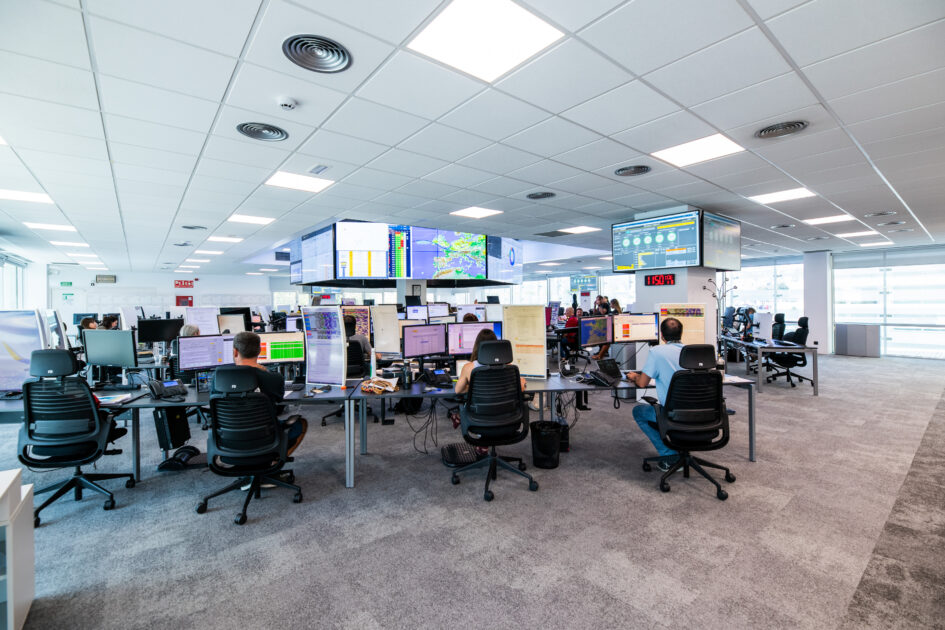
Weather analysis, fuel consumption, On Time Performance, and Key Performance Indicators are displayed on screens and terminals in the circular space housing 60 employees with duty pilot, central manager and team leader in co-ordination to manage the flow of communications and micro-management that remain hidden from the public but form the core centre of operations.
Elsewhere is a crisis management centre, a suite of rooms, tasked for worse case scenario incidents, family assistance room and crew rooms, replete with 24/7 state of the art communications technology and walls of videos streaming live news feeds. A mirror room exists in a different city with a different network as part of the duplication and redundancy protocol. So sensitive is the crisis room, that no photography is allowed. But it’s a testament to Vueling’s approach: built-in redundancy, control and innovation combined.
With 210 routes, Vueling is expanding in Europe with the UK and Spain its top two markets. Founded in 2004 it is now the largest airline in Spanish domestics and the clear leader at Barcelona Airport. There are 11 bases in Spain and five across the UK, France, Italy and the Netherlands.
In the UK, Gatwick is its largest base and gateway with 160 weekly departures mainly to Spain but also to Rome Florence and Paris. This includes 54 weekly flights from Gatwick to Barcelona. Vueling is still mainly a point to point airline, but leveraging major bases such as Barcelona and Gatwick, points to a more hybrid hub direction.
Vueling is also notably dedicated to its airport partners. Cardiff Airport for example remains a key destination for Vueling, despite its proximity to the more popular Bristol Airport. But Cardiff’s catchment is considered to be better, despite the seasonal nature of its traffic . ‘We see the airport as our partner, and it takes a few years maturity to see routes develop,’ says director long term network Jordi Pla.
So why do passengers like Vueling? I spoke to passengers on my Vueling flights who said the frequency, quality service and product as well as price were preferable to other airlines. On Time Performance is also high at 86percent. With load factors also high there’s barely an empty seat on a Vueling flight.
The demographic, while focussed mainly at young professionals, also includes families, older business people and students. With a two class cabin, Vueling offers Basic which includes a seat and one bag and Space Plus for premium passengers. Its A320 fleet has sleek and comfortable interiors.
No surprise that Vueling is very focussed on the seamless digital passenger experience for the whole of the customer journey including security and boarding. Touchless boarding procedures were launched jointly with AENA in November. The aim is to reduce queuing and boarding times and make the process more efficient and practical, especially after the problems following Covid. Vueling reports that the new boarding procedures are working fine with ongoing improvements and will work with other countries to introduce it in their territories.
Another clear gain is in sustainability. Vueling knows how to walk and talk on this one. As a short to medium haul airline, its CO2 emissions are the lowest contributors towards the global CO2 emissions of 2percent. Up to 50percent of Spanish domestic flights are less than 500km. As part of IA\G, the first airline group to commit to net-zero emissions by 2050, and as a clean sheet airline, Vueling was able to operate sustainability from day one. Sustainable Aviation Fuels form the basis of its strategy, into the 2050 timeframe, starting with a clear reliance on SAF, combining from 2025 with electric or hydrogen fuel cell, building out to a partial reliance on SAF by 2050. It only signs with certified SAF suppliers with the commitment of not using palm oil to avoid deforestation.
Fleet efficiency is central to this strategy, with a renewal rate that provides constant improvements on fuel consumption, noise and weight. Vueling micro-manages all aspects. The cabin features ultra light seats, digitisation of flight documentation and lighter catering trolleys and efficient waste reduction.
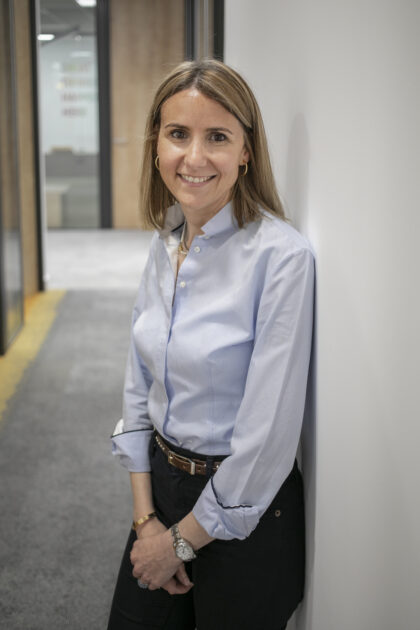
It has signed a LOI with WheelTug an innovative procedure which automates taxiing reducing aircraft engine operation and eliminating tractors on the apron . The airline optimises flight trajectories with the aim of 10percent less fuel consumption and motivates pilots to reduce fuel by kilogram consumed to avoid CO2 emissions. For Vueling ‘Every little counts’. Pilots are required to review their flights with post-flight reports to see if more fuel could have been saved. ‘We encourage pilots to save a kilo every day because it counts,’ says Director operations planning Isabel Garcia.
The airline has analysed it has saved 40,000tons of fuel since 2019.
Indeed its fuel efficiency programme is a science in itself with four pillars 1)routes and flight planning 2) aircraft weight and performance, inflight efficiency, and reducing fuel weight. Full year forecasting of fuel consumption based on load factors, the fleet mix is carried out. The higher the load factors, the more fuel we burn,’ says Isabel Garcia . If an aircraft is ageing, the airline ensures engine washes.
So with such steady growth in its first 20 years, it’s safe to say that Vueling has come of age. Watch out for this airline in Europe as it may not be the noisiest player in the skies, but it is definitely one of the most efficient and forward-thinking.
